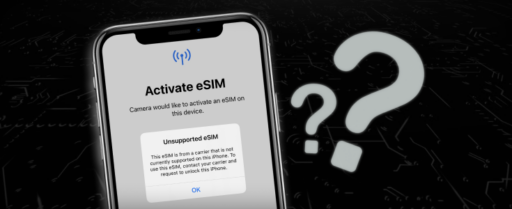When you need to configure your iPhone for a new mobile network or troubleshoot connectivity issues, adjusting the APN (Access Point Name) settings can make all the difference. Understanding how to change iPhone APN settings, especially if you’re using a carrier that doesn’t automatically set these configurations. In this guide, we’ll walk you through the process of changing your iPhone’s APN settings and explain why you might need to do it.
What Are APN Settings?
Before diving into how to change iPhone APN settings, let’s quickly cover what they are. APN settings are crucial for your iPhone’s connection to your carrier’s data network. They dictate how your device connects to the internet, sending and receiving data like MMS (Multimedia Messaging Service) and mobile data. Without the correct APN settings, you may experience issues like being unable to access the internet or send multimedia messages.
Why You Might Need to Change APN Settings
You might need to change your iPhone’s APN settings for several reasons. Perhaps you’ve switched carriers, are using a third-party carrier, or are traveling internationally and need to connect to a local network. Some airlines automatically configure your APN settings when you insert a new SIM card, but this isn’t always the case. Knowing how to change iPhone APN settings manually can save you from connectivity headaches.
Steps to Change iPhone APN Settings
Now that you know why APN settings are important, let’s get into the step-by-step process of how to change iPhone APN settings.
1. Accessing the Settings Menu
To start, unlock your iPhone and open the “Settings” app. Scroll down and tap on “Cellular.” Within the Cellular menu, you’ll find an option labeled “Cellular Data Network.” Tap on it to proceed.
2. Entering New APN Information
Once you’re in the Cellular Data Network menu, you’ll see fields to input your new APN settings. These typically include fields for APN, Username, and Password. The exact details you need to enter will depend on your carrier. You can usually find this information on your carrier’s website or by contacting their customer support.
Here’s a breakdown of the key fields you may need to fill out:
- APN: The name of your carrier’s APN.
- Username: Often left blank, but some carriers require it.
- Password: Also often left blank unless specified by your carrier.
- MMS Proxy: The address used for MMS (optional).
- MMS Max Message Size: The maximum size for MMS messages (optional).
3. Saving Your Changes
After entering the required information, make sure to save the settings. Your iPhone should automatically apply the new APN settings. However, restarting your device to ensure the settings take effect properly is a good idea.
Troubleshooting Common Issues
Even when you know how to change iPhone APN settings, you might encounter a few hiccups. Here are some common issues and how to address them:
- Incorrect APN Settings: Double-check the APN information you entered. A single typo can prevent your iPhone from connecting properly.
- Settings Won’t Save: If your settings don’t save, you might need to reset your network settings and try again. Go to “Settings” > “General” > “Reset” > “Reset Network Settings.” This will erase all network configurations, so you’ll need to re-enter your Wi-Fi passwords and APN settings.
- No Cellular Data: If you still can’t connect to the internet, ensure that “Cellular Data” is turned on in the “Cellular” menu. If it is, try toggling Airplane Mode on and off to reset your connection.
How Driffle eSIM Simplifies APN Management
Using Driffle eSIM makes managing APN settings much easier, especially when switching carriers or traveling internationally. Driffle eSIM automatically configures your device with the correct APN settings, eliminating the need to input this information manually. This not only saves time but also reduces the risk of errors. Plus, Driffle eSIM offers flexible data plans, ensuring you stay connected without the hassle of changing physical SIM cards.
Summary
Learning how to change iPhone APN settings is a valuable skill, especially in a world where staying connected is more important than ever. Whether you’re troubleshooting network issues or setting up your iPhone for a new carrier, adjusting these settings can make all the difference. With this guide, you now know to navigate these changes with confidence.
Understanding how to change iPhone APN settings can prevent potential connectivity issues. Remember to enter the correct details, troubleshoot if necessary, and consider using tools like Driffle eSIM for a smoother experience. Stay connected, and enjoy seamless mobile usage wherever you go!
Find out more about Driffle eSIM and affordable plans here. They’re worth it!



